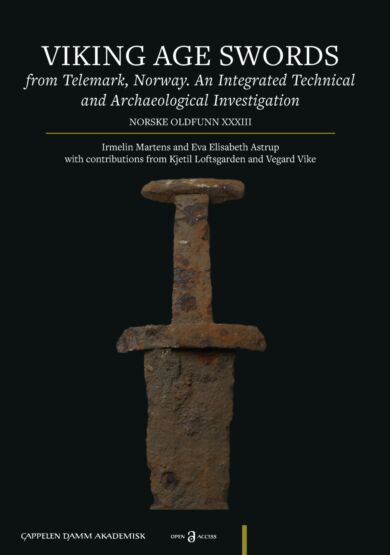Viking age swords from Telemark, Norway
an integrated technical and archaeological investigation
- Format: Innbundet
- Antall sider: 151
- Språk: Engelsk
- Forlag/Utgiver: Cappelen Damm AS
- Nivå: Voksen
- EAN: 9788202742775
- Kom i salg: 17. jan. 2022
- Utgivelsesår: 2021
- Tittel på originalspråk: Viking age swords from Telemark, Norway
- Bidragsyter: Astrup, Eva Elisabeth (for) ; Loftsgarden, Kjetil (for) ; Martens, Irmelin (for) ; Vike, Vegard (for)
- Utgave nr.: 1
- Emnekategori: Arkeologi, Europeisk historie: vikingene
349,-
Viking Age Swords from Telemark, Norway. An Integrated Technical and Archaeological Investigation provides a metallographic analysis of 21 Viking Age swords found in the county Telemark in southeastern Norway. The book is the result of a collaboration between archaeologist Irmelin Martens and chemist Eva Elisabeth Astrup.
The metallographic investigations revealed five construction types for sword blades, of which four, requiring different technical levels of smithing, may well have been mastered by Norwegian blacksmiths at that time. Combined with x-ray radiographic studies, the metallographic investigations indicate that new techniques, including inlay decorations, were introduced and disseminated among weaponsmiths during the Viking Age, findings that are also probably representative for the more than 3000 swords found in all areas of the country. The majority of them are domestic types, and their great number obviously reflects the organization of sword production and influenced blacksmiths' social standing.
Issues relating to origin and production places in a societal context are highly relevant to international research. Viking Age Swords from Telemark, Norway questions the dominant role of the Carolingian realm and suggests it is high time to search for other innovation centres. The book's investigations demonstrate that detailed studies on typology and decoration schemes are important for future research on these problems.
The metallographic investigations revealed five construction types for sword blades, of which four, requiring different technical levels of smithing, may well have been mastered by Norwegian blacksmiths at that time. Combined with x-ray radiographic studies, the metallographic investigations indicate that new techniques, including inlay decorations, were introduced and disseminated among weaponsmiths during the Viking Age, findings that are also probably representative for the more than 3000 swords found in all areas of the country. The majority of them are domestic types, and their great number obviously reflects the organization of sword production and influenced blacksmiths' social standing.
Issues relating to origin and production places in a societal context are highly relevant to international research. Viking Age Swords from Telemark, Norway questions the dominant role of the Carolingian realm and suggests it is high time to search for other innovation centres. The book's investigations demonstrate that detailed studies on typology and decoration schemes are important for future research on these problems.


